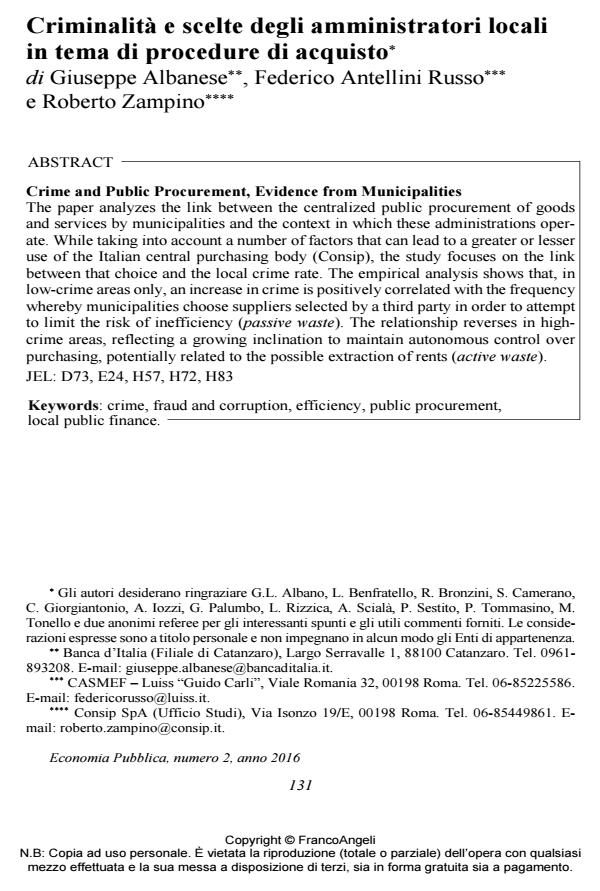Crime and Public Procurement, Evidence from Municipalities
Journal title ECONOMIA PUBBLICA
Author/s Giuseppe Albanese, Federico Antellini Russo, Roberto Zampino
Publishing Year 2017 Issue 2016/2
Language Italian Pages 37 P. 131-167 File size 369 KB
DOI 10.3280/EP2016-002005
DOI is like a bar code for intellectual property: to have more infomation
click here
Below, you can see the article first page
If you want to buy this article in PDF format, you can do it, following the instructions to buy download credits

FrancoAngeli is member of Publishers International Linking Association, Inc (PILA), a not-for-profit association which run the CrossRef service enabling links to and from online scholarly content.
The paper analyzes the link between the centralized public procurement of goods and services by municipalities and the context in which these administrations operate. While taking into account a number of factors that can lead to a greater or lesser use of the Italian central purchasing body (Consip), the study focuses on the link between that choice and the local crime rate. The empirical analysis shows that, in low-crime areas only, an increase in crime is positively correlated with the frequency whereby municipalities choose suppliers selected by a third party in order to attempt to limit the risk of inefficiency (passive waste). The relationship reverses in high-crime areas, reflecting a growing inclination to maintain autonomous control over purchasing, potentially related to the possible extraction of rents (active waste).
Keywords: Crime, fraud and corruption, efficiency, public procurement, local public finance.
Jel codes: D73, E24, H57, H72, H83.
Giuseppe Albanese, Federico Antellini Russo, Roberto Zampino, Criminalità e scelte degli amministratori locali in tema di procedure di acquisto in "ECONOMIA PUBBLICA " 2/2016, pp 131-167, DOI: 10.3280/EP2016-002005